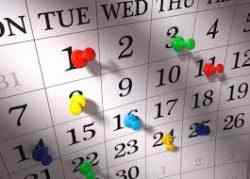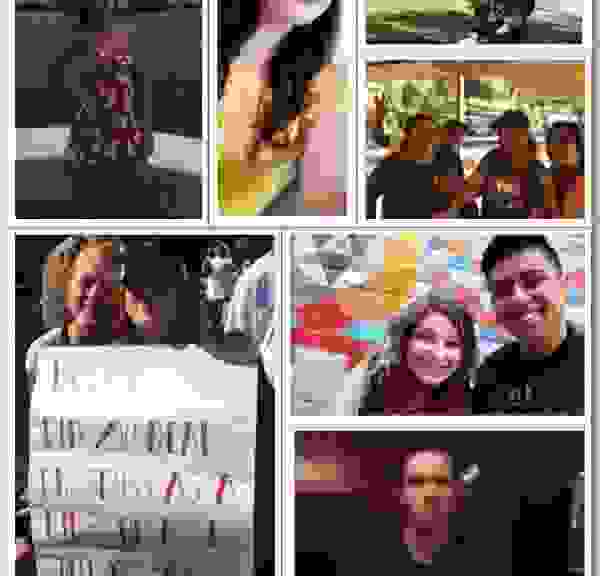
Featured Bloggers Make 5: Anna-Lena, Leslie, Katie, Teija, Ben, Sydney, & Isaura
 In class Tuesday, we had time to read our Graphic Novels, discuss them, discuss different prompts given to us, and talk about our buddies. My graphic novel was Anya’s Ghost, and I enjoyed it a lot! I’ve already started looking for other works by Brosgol. I grew up reading graphic novels/comics/manga, so this was a very fast read for me and I re-read it several times. As our group mentioned in class, this is a book you need to know your readers/students well for before you recommend it to them because some themes (body image issues) or actions (sneaking out of school to smoke) might impact different readers (ie. young readers) differently. Speaking to people who haven’t read graphic novels like this much before shone that light on me: I was reading things like this by 6th or 7th grade, but as a group decision, we agreed high school might be an okay time to actually recommend it to a student. Still, there may be exceptions where students might be mature enough to handle this book before high school as well!
In class Tuesday, we had time to read our Graphic Novels, discuss them, discuss different prompts given to us, and talk about our buddies. My graphic novel was Anya’s Ghost, and I enjoyed it a lot! I’ve already started looking for other works by Brosgol. I grew up reading graphic novels/comics/manga, so this was a very fast read for me and I re-read it several times. As our group mentioned in class, this is a book you need to know your readers/students well for before you recommend it to them because some themes (body image issues) or actions (sneaking out of school to smoke) might impact different readers (ie. young readers) differently. Speaking to people who haven’t read graphic novels like this much before shone that light on me: I was reading things like this by 6th or 7th grade, but as a group decision, we agreed high school might be an okay time to actually recommend it to a student. Still, there may be exceptions where students might be mature enough to handle this book before high school as well!
On Thursday, Sean, Brittanee and Ariel read Matt De La Peña’s Last Stop on Market Street to us and lead us in a group activity where we discussed when we felt sorry for ourselves, what one good thing in the situation was. It asked us to look at the silver lining of unfortunate things that happen to us. I thought this was a great discussion, and I think kids of all ages could participate in this activity pretty well. After discussing our answers and sharing with the class, we took photos for our 8th grade buddies and took some time to respond to them.
On Halloween, we continued talking about graphic novels, specifically those in the link on page 7 of that handy link. We talked about ideas for activities related to our novels like the ‘read-write-think’ activity, or, because all our novels have some very unique characters, (most of whom I gathered were treated differently from other characters) we thought about including activities to celebrate uniqueness in our future classrooms: What makes you different, and how can you come to terms with that being okay? Then we responded to Reading in the Wild as a whole. We opened a Google Doc to share our ideas with the whole class (Wow, there were a lot of us on there at once!). Personally, my favorite take aways were from the earlier chapters. I really liked Miller’s emphasis on reading every day in class to show it is a valued activity that can be included in everyday life. And with all my classes being reading intensive classes this semester, I must say I would be much further behind in my classes (haha) if I hadn’t thought about “Fringe Reading.” Asking for students to read out loud is a good idea, too, but you have to know your students: I was a very anxious kid if I had to read out loud and none of my teachers caught on, making me hate the idea of reading out loud (I’ve come around now, though. Now it’s not so bad). After we wrapped up our discussions on Miller, we gave feedback on what worked well and what didn’t with the book buddies. Working with my buddy was a great experience and I hope I can find a way to do something similar in an ESL classroom abroad.
On our last day with our graphic novels, we had Jamie and Sarah’s Javanka Steptoe presentation and then we drew self-portraits in Steptoe’s style: don’t stay in the lines, make things look different but the same, and that makes them look beautiful in their own way. I thought this was a fun activity, too (I’m a sucker for time to draw in class!). It also encouraged me to think about drawing in a different style, where even my mistakes were okay and were something I could work off of, instead of erasing them and starting fresh. I think it would be a good activity for kids who have a similar outlook on life.
Now! Onto the more interesting topic at hand! You all had such brilliant makes!
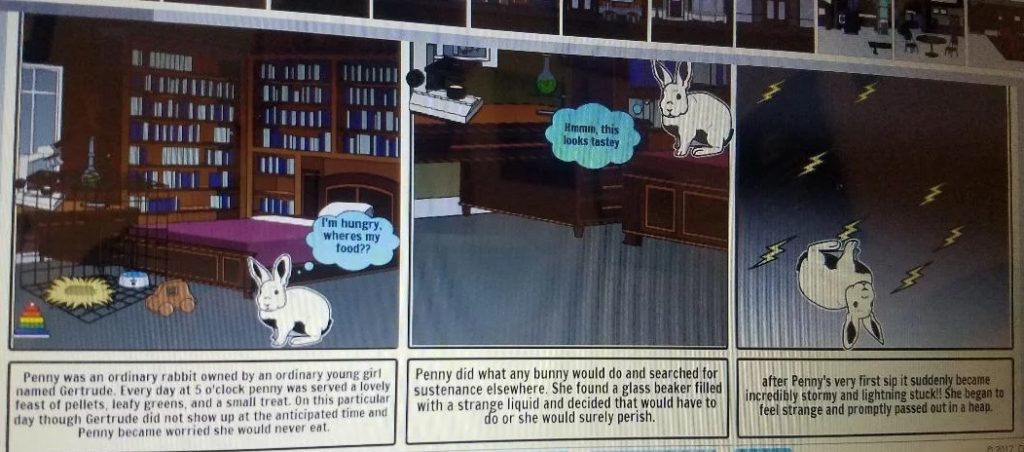 First off, I loved that so many people tried their hands at making comics! So, first, I have to give a shout-out to Megan’s Bunny Villain Backstory comic! I was considering reading Flora and Ulysses, and I think this might make me ask for a copy come holiday time. I’ve never used online comic makers before, so I must say this looks really great, and it really got me to laugh! My former housemate had an evil white bunny, and this got me thinking of Dutchess chewing our carpets and pillows among other things… maybe she was power-hungry and not just hungry-hungry…?
First off, I loved that so many people tried their hands at making comics! So, first, I have to give a shout-out to Megan’s Bunny Villain Backstory comic! I was considering reading Flora and Ulysses, and I think this might make me ask for a copy come holiday time. I’ve never used online comic makers before, so I must say this looks really great, and it really got me to laugh! My former housemate had an evil white bunny, and this got me thinking of Dutchess chewing our carpets and pillows among other things… maybe she was power-hungry and not just hungry-hungry…?
Sarah’s Alternate Ending to Anya’s Ghost has me shivering and wanting more panels. What a cliffhanger! And it totally seems like something plausible, which makes it even creepier! (Great use of time lapse in the “gutter” spaces between each panel, too!!) What would a final show-down between her and Anya even look like? Or would she aim to take down someone else now that Anya has disposed of her? Anya’s friend, maybe?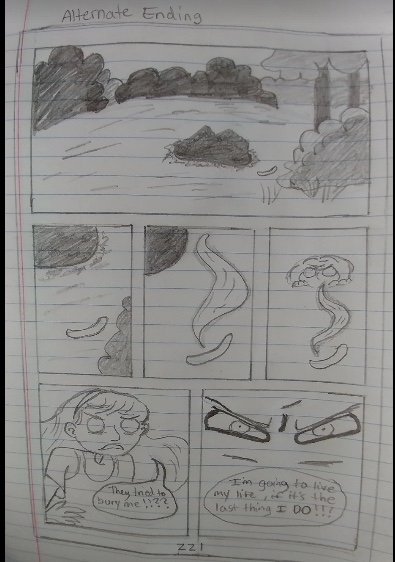
Kelcy’s Alternate scene for Anya’s Ghost’s party scene was actually a scene I was thinking of taking on in a similar way (if I weren’t writing this!), so it was interesting to see what she came up with! I agree that we need to show more girl power, and I especially think this alternate scene would have fit within the story (this part of the storyline was one that could’ve had more of a final conclusion, in my opinion) just fine without changing the overall structure of the comic much. Anya develops as a character who eventually becomes more likable in that she understands other people better by the end of the comic. I think this would’ve been a perfect way to show that change starting to happen in the book, and it would’ve brought in more conversations between girls who look like they have a lot of differences, but might actually have lots of similarities underneath somewhere.
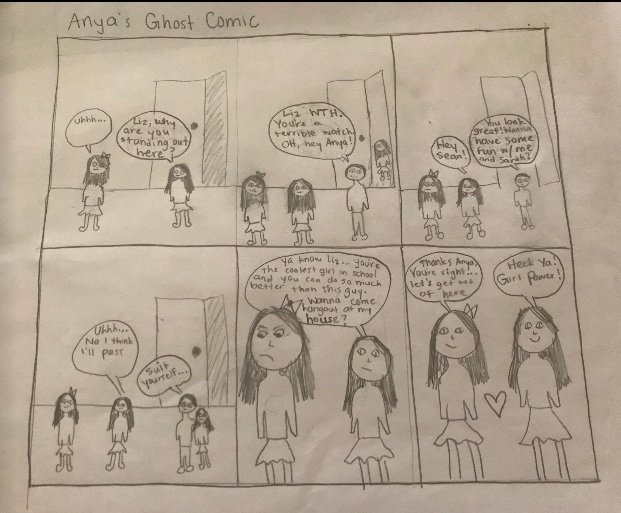 I’ve been waiting all semester for this unit, and I’ve had a lot of fun looking at these Makes. Thank you all for sharing them!!
I’ve been waiting all semester for this unit, and I’ve had a lot of fun looking at these Makes. Thank you all for sharing them!!
Author Bio: Anna-Lena is originally from a city in the Bay Area called San Mateo. This is her 6th year in Chico, and it’s her last semester, which she is both excited and very nervous about. She is a total nerd for manga (Japanese comics), Star Wars, Game of Thrones (go Arya!), Korean Hip Hop and Kpop. She grew up bilingually in German and English by speaking German with her mom, older sister, younger brother, and dog, and English with her dad. She works in the ESL Center on campus. Getting to work with a crowd similar to one she hopes to maybe work with in the future has been an incredibly enriching experience for her: she’ll be sad to leave it when she’s no longer a student in the spring.
 There is a lot that has been happening in these two weeks: we have finished our graphic novels, we have reached the last chapter of Miller’s Reading in the Wild and we also had our last book buddy response!
There is a lot that has been happening in these two weeks: we have finished our graphic novels, we have reached the last chapter of Miller’s Reading in the Wild and we also had our last book buddy response!
For our 5th Make Cycle we read graphic novels. Kim Jaxon provided us a list of various graphic novels to chose from which were: Smile, Anya’s Ghost, El Deafo, Roller Girl, and Flora and Ulysses.The book I read during this make was Smile by Raina Telgemeier. Smile is a graphic novel memoir that shares her 6th grade experience through some of her sophomore year in high school. She shares the moment she got her braces and the frustration of fitting in, going to dentist appointments, the start of boy trouble and her friendships in school. I think it is a great book for school aged children to relate to their experiences growing up. Telgemeier highlights the awkward stages of what it is like to go through puberty and transition from elementary to middle school. She also discusses the first encounters of boys and first relationships. I definitely related to many of these “issues” that were in the book! For example, when going back to my middle school self, I laughed at the things that I thought were stressful when they were really far from being problematic.
Overall, this book was an enjoyable book to read. Raina Telgemeier captures the emotions that every teenager goes through when transitioning to adolescence. This book has a lot of lessons for children to learn from. For example, Raina realizes that her friends are not very respectful to her and decided to go separate ways and finds a group of friends she’s comfortable with. When her braces are removed, she feels she has “been letting the way she looked on the outside affect how she felt on the inside” (206). She then started to focus on her interests and she then found herself to be happy and accept herself. I think this is a great lesson for school age children to learn from.
Having worked with our graphic novels it introduced the class and myself on how to incorporate graphic novels into the curriculum. For example, a takeaway I got from reading graphic novels is I can amend curriculum where students are asked to do their own comic strip using various websites/links to create their own memoir. I think this is a fun exercise to do with students because it promotes creativity. My classmates attempted to create their own graphic novel/ comic strips for their Makes.
For this Make, Morgan also read the book Smile and I really liked how she posted pictures of herself when she wore braces. I thought this was a fun Make because it showed how she could relate to the author’s’ experiences.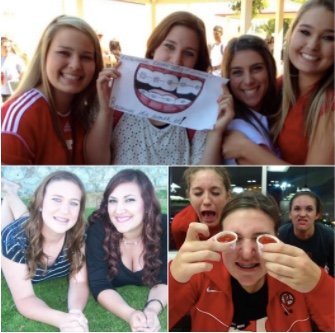
Another Make that stood out to me was Alison’s. Alison read the book Roller Girl by Victoria Jamieson. Roller Girl is about a girl name Astrid who is twelve year old. Astrid has been best friend Nicole and they have done things together. When Astrid signs up to join a camp of roller derby, she assumed Nicole will do the same. But Nicole does not sign up for roller derby. Nicole finds her own interests and builds other friendships. Astrid then finds time to know who she is and prepare for the roller game. In Alison’s make she does a comic strip that highlights how it’s normal to grow apart from childhood friends. I think this book relates to many individuals who have a best friend and then lose that chemistry due to growing up. In her story jumper she uses visuals and no words to carry the message of friendships disintegrating. I think this book is great for students to help them cope with future friendships that grow apart.
In the chapter of “Wild Readers Show Preferences,” Miller captures the idea of how important is to acknowledge the genre students are intrigued in. For example, students might enjoy reading graphic novels, free verse, non fiction, fiction, series, one specific genre or books by the same author, but it is important to expose wild readers to a wider range of books, which helps teachers make recommendations for their similar interest in reading. I agree that having determining what books each student has it “reveals a lot about student’s reading experiences and book knowledge and provides us with information about whether students have read… and comes from wide reading and lots of positive encounters with the books” (Miller 167).
After reading this chapter, something I found intriguing was how Miller encourages readers to reread their favorite book. Rereading strengthens a reader’s retention and comprehension: “students reread books for three main reasons: they want to absorb a treasured story into their skin, they want to cement their knowledge of topics and ideas” (175). I also like the ideas that students should be allowed to read comics and graphic novels because it only engages them to read books and become avid readers.
Coming to an end in Miller’s guidance to help future educators create positive reading communities–to promote lifelong readers–has become a great opportunity to help my future students engage in reading activities. Miller has great insights on various topics on how to get students to participate in reflect in their reading practices to strengthen their understanding and love for literature! In class we shared a Google Doc to help us tie in all the takeaways we got from Reading in the Wild. Having this Google Doc will help us prepare and create our Manifesto/ Reflection Final Paper.
To conclude these two weeks, we also came to an end with our adventure with our Book Buddies in Palm Desert. Reading with 8th grades has been such a rewarding and memorable experience I have ever done in my English classes… or any class before.
For my book buddy experience, I read Butter by Erin Jade Lange. The book has a dark comedy tone. This book was an enjoyable book to read; I was not able to put the book down. The book is about a boy who weighs 423 pounds and everybody knows him as “Butter” due to a bullying incident. Butter’s mom has given up hope for her son to lose weight and his dad sees Butter as a disappointment and has been distant from his son ever since he gained weight. Butter has no friends: he is seen as a obese kid who eats alone.
One day Butter experiences humiliation in the cafeteria. He then makes a website declaring his suicide on New Year’s Eve, saying he is going to eat himself to death. In Butte’s surprise, the whole school encourages him and overnight he becomes popular. Butter starts to have friends and becomes outgoing, talks to his crush. He enjoyed the attention, but he realized that he was only a “show.” No one is interested of getting to know him, besides seeing the “big” kid end his life. The book is a great book for students to read. Some themes of this book are acceptance, popularity, anti-suicide, bullying, which are common situations students experience in school and outside of the school system.
I really enjoyed the opportunity Dr. Kim Jaxon gave my class to read with 8th graders, I think it is a great idea for schools to be open to do. It allows the students to be engaged and be heard. When I get my teaching credentials I will sure hope to have the opportunity to work with future teachers with Kim Jaxon.
Author Bio: I was born in Pomona, CA. I come from a Mexican culture. I am an introvert. I am family oriented. My mom, my three sisters, and my boyfriend are my family. I enjoy reading, running, organizing, binge watch anything on Netflix, eating and sleeping. I am a Liberal Studies Major with a Child Development Minor. I hope to teach in a kindergarten-fourth grade classroom near my hometown.
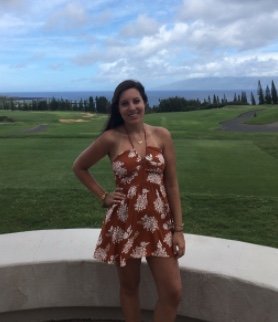 After a few weeks working with our 8th grade book buddies from Palm Desert we have finally finished. Overall I loved working with Mrs. Bohn’s class. The book I read was Scrawl and my book buddy was Robert. Each week he brought up new, interesting questions that we then discussed. It was a nice way to get to know him and what he finds to be important while reading a story. He even thought of who to cast if the book was to be made into a movie! This is something I never would have thought of but I think it is a great way for students who love pop culture to draw it into their books. Seeing as so many books are now being made into movies another cool idea is for students to read the book and then watch the movie in class and compare the two.
After a few weeks working with our 8th grade book buddies from Palm Desert we have finally finished. Overall I loved working with Mrs. Bohn’s class. The book I read was Scrawl and my book buddy was Robert. Each week he brought up new, interesting questions that we then discussed. It was a nice way to get to know him and what he finds to be important while reading a story. He even thought of who to cast if the book was to be made into a movie! This is something I never would have thought of but I think it is a great way for students who love pop culture to draw it into their books. Seeing as so many books are now being made into movies another cool idea is for students to read the book and then watch the movie in class and compare the two.
This week in class we finished our graphic novels. We even talked in our book groups how to teach with graphic novels. The book I chose to read was Anya’s Ghost by Vera Brosgol. The book is about a teenager, Anya, who is struggling to find a balance between the American lifestyle and her Russian roots. She shows signs of body dysmorphia, which can be upsetting to many readers who may feel a connection to Anya’s struggle. One day on her way home from school Anya takes a stroll through the park. As she is walking, she falls into an abandoned well. At the bottom, Anya becomes fearful when she sees a skeleton, but she is petrified when she sees the ghost of who the skeleton once belonged to. Emily tells the story of her murder and how she ended up in the well. You pity the poor child and grow to like her. However, after Anya finds herself leaving a party without her crush in tow, Emily grows very impatient. Turns out Emily was not murdered but she was the murderer of her own love triangle. Personally this has been one of my favorite books so far. It was a real page turner. After finishing the book my group and I decided that we would recommend Anya’s Ghost for 9th or 10th graders since it deals with such heavy topics. The book covers topics like citizenship, bullying, smoking, partying, religion, and murder. You really feel for Anya and her life. At some point in all of our lives we do not know what we want or the direction we are heading in. However, Anya goes through all of the emotions we feel and comes out a stronger person. It shows two sides of dealing with heartbreak. Anya takes in the embarrassment and pain and turns it into angst. However, Emily took her heartache and murdered two people. The book is a great way to talk about the right and wrong way to handle situations. Also karma got Emily. No one wants to be like Emily. The book also shows how you do not know what people are going through. Everyone thinks that Elizabeth is perfect yet we see how she is in a loveless relationship and unhappy. I took away being nice to everyone (even someone like Dima), never assume what you know someone is going through, love can drive you crazy, and trust no one.
For our graphic novel makes I noticed a cool common trend. Everyone was creative and pushed themselves to think outside of just drawing. There were quite a few people who used websites for comic strips, roller derby team flyers, and collages. Many people who read Roller Girl drew themselves into the book and we got to see how they would have reacted to the bullies. Another book people read was Smile by Raina Telgemeier. Morgan Carrico did an amazing job with her make. She found images of herself from the time she had braces! Morgan stated that she liked the book because of her ability to relate to the main character. Morgan states, “I remember how much I was teased and made fun of for having braces, which looking back on it now I do not understand why I cared so much!” She also talked about how the book teaches young students to be yourself and don’t listen to what anybody else thinks about you. It cool to see yourself as the main character of any book and Morgan really shows us that.
Another make I loved was by Hailee Van Housen. Hailee also read the book Anya’s Ghost like me. For her make she decided to create a comic strip of the teenage high school struggle of day dreaming. Like Anya, Hailee’s character deals with a crush and feeling distracted. Hailee talks about the high school struggle we all have come to know. Her comic strip was a great way to relate back to the book seeing as we have all been know to wander off during class at some point or another. 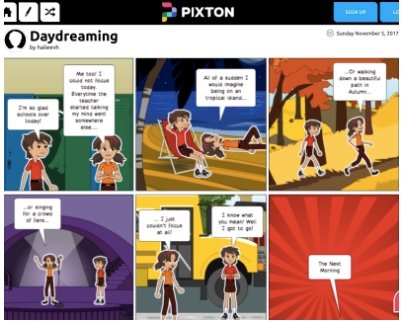
This week we also looked at Miller chapter 5. This chapter covered how wild readers show preferences. One cool thing I found was how students polled their favorite books and one of the book on the list was Smile, which was one of our book choices. This was great because it showed how we can use all of the book options from class for our future students. Miller also went into how readers can differ vastly. Some students may prefer one genre or author. This can be difficult if the author only has limited books. It is great to push readers outside of their comfort zones and find new favorites. Miller also goes into how some students enjoy certain series or graphic novels. It is very important for teachers to learn what their students enjoy reading to help push them to go further. One great thing to do is to have students rate their favorite genres on a graph. This was a cool idea because it allows you to see how much they enjoy one topic or genre. If they just had to rate them on a scale of say 1-5 or rank them you cannot tell how much more they like one more than the other. I am so thankful for Miller and her book. I have learned so much from her. I myself have never thought of myself as a reader, but I now have a better understanding of how to become a wild reader. Also shoutout to Miller for all of the amazing worksheets and reading logs in the back of the book!
Author Bio: Katie Larson is a Liberal Studies major at Chico State. Her goal is to one day teach anywhere from Kindergarten to 3rd grade. After college, she plans on moving back to the Bay Area and begin teaching.
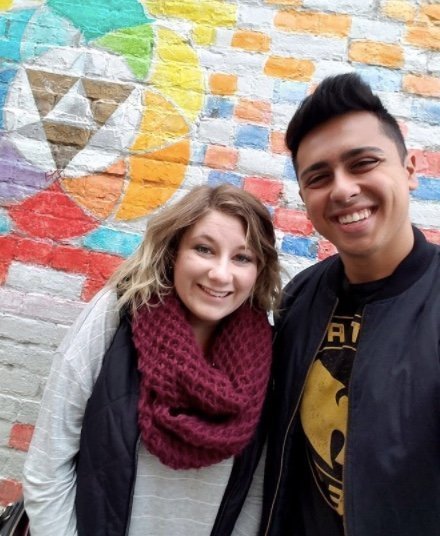 These past two weeks we started wrapping up replying to our amazing book buddies and finished reading the books. The book I read was Counting By 7’s by Holly Goldberg Sloan. I had to catch up reading it because I had so much school work to do, but I really liked this book. Honestly, I feel like my book buddy could have responded more, but we did have really good conversations and it looks like most people had really great conversations with their book buddies! After a class discussion it seems like almost everyone enjoyed this activity; the only thing we would change would be not having the website this activity takes place on be Padlet. This website is very limited and glitchy: there are probably better options out there to really make this activity work the way it is intended to. Overall I really enjoyed this activity and think this greatly benefited us as future teachers as well as the eighth graders!
These past two weeks we started wrapping up replying to our amazing book buddies and finished reading the books. The book I read was Counting By 7’s by Holly Goldberg Sloan. I had to catch up reading it because I had so much school work to do, but I really liked this book. Honestly, I feel like my book buddy could have responded more, but we did have really good conversations and it looks like most people had really great conversations with their book buddies! After a class discussion it seems like almost everyone enjoyed this activity; the only thing we would change would be not having the website this activity takes place on be Padlet. This website is very limited and glitchy: there are probably better options out there to really make this activity work the way it is intended to. Overall I really enjoyed this activity and think this greatly benefited us as future teachers as well as the eighth graders!
After reading Miller chapter 5 here are the most important parts I took from the chapter. First of all, Miller discusses that
“It is easy to connect with students who like the same books we do, but we cannot let our personal reading preferences become biases that limit students’ reading” (167).
She discusses how sometimes her students may vote on a book to read that she is not thrilled about reading, but she needs to let them read it because that is what they want to read.
Another main point in this chapter is types of reading preferences: “Preferences are not fixed. Wild readers move between different types of reading material depending on their needs and interests at any given time. As readers and texts become more sophisticated, tastes may change” (169). Its important to know these different types of preferences so you can help determine books for your students. Another important aspect of this chapter is re-reading books. Miller talks about re-reading books and how she always re-reads her favorite books over winter breaks. It is totally fine to let your students re-read books but you have to “determine why they want to re-read a text” (175). Because in some cases students re-read the books because they love the book, but it’s not a good strategy to let them return to the book because they have nothing else to read. Overall this was a very useful chapter and gave some very good advice about readers preferences. Also this was the last chapter in Miller’s book: this whole book is very useful and has giving us so many useful tips to use in our future classrooms!
The graphic novel I choose was Smile, which is an autobiographical graphic novel written by Raina Telgemeier. This book is about the author and her life from 6th grade to high school. This book is a classic tale of the life of a young girl growing up: it is a great book for anyone because everyone has their fair share awkward moments and challenges growing up. In this case it is about Raina and how she has to have a very long set of braces, and this books goes through the pain she went through mentally, emotionally and physically, on top of going through middle school and starting high school.
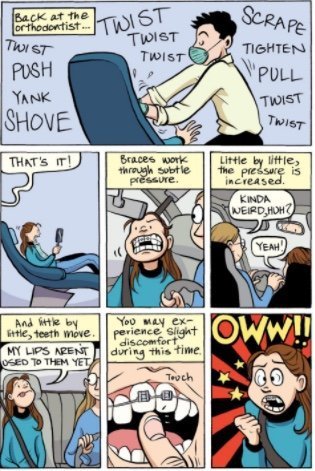 I don’t want to give away too much of the book, but over I really enjoyed this graphic novel, I think it is a book adults can relate to because they have been through event like this already, and students can relate because they could be going through a similar situation right now. Also I think graphic novels are really appealing to students because they are still reading a book, but it is almost all pictures. It still keeps you interested and still requires you to pay attention because there are key points in the pictures and if you don’t look at the pictures you may miss something important!
I don’t want to give away too much of the book, but over I really enjoyed this graphic novel, I think it is a book adults can relate to because they have been through event like this already, and students can relate because they could be going through a similar situation right now. Also I think graphic novels are really appealing to students because they are still reading a book, but it is almost all pictures. It still keeps you interested and still requires you to pay attention because there are key points in the pictures and if you don’t look at the pictures you may miss something important!
One of the makes that stood out to me was created by Shannon Tatman; the book she read was Roller Girl. Shannon found pictures that represented the book and made a flyer for Roller Derby tryouts at Cal Skate! This make stood out to me because it is still a graphic and something we could have our students do in our future classrooms!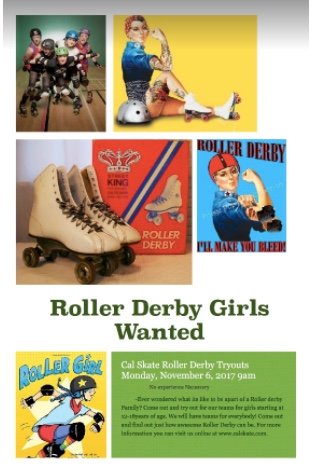
Another make I really liked from Smile, the book I read, was Morgan Carrico’s make! Smile is about a young girl who goes through all of middle school and the beginning of high school with braces. They were really painful for her physically and even mentally, because well, we all know how these young kids can be! She was really embarrassed and just wanted everyone to like her but her braces made her really self-conscious and some of her friends even made fun of her. She went though a lot and I know a lot of us can relate. I didn’t have braces, but I did have a retainer and it was still a painful and a very self-conscious time for me. I really liked Morgan’s make because it was very brave of her to post something like that, and I feel like we need to help our future student be accepting of themselves and other students! To end I really liked what Morgan had to say about the book Smile: “This book teaches young students to be yourself and don’t listen to what anybody else thinks about you.”
Author Bio: Teija Gregory is a senior liberal studies student with a minor in special education, who is graduating in the spring. She plans on going into the concurrent credential program here at Chico State fall of 2018. She plans on becoming an elementary school teacher hopefully for grades K-3. She is from Rocklin, CA and some of her favorite things include Disneyland, Puppies and Pinteresting! Above she is pictured with her boyfriend Shawn!
 These last couple of weeks have been quite eventful. We had a couple of fantastic picture book presentations thanks to Sean, Brittanee, and Ariel, and Jamie and Sarah. Sadly, we also had to bid farewell to our 8th grade reading buddies. I believe most of us had a great experience discussing our books with our intelligent prodigies. Another Chico Halloween has come and gone, probably for the better, although I do hope everyone enjoyed themselves and ate plenty of candy.
These last couple of weeks have been quite eventful. We had a couple of fantastic picture book presentations thanks to Sean, Brittanee, and Ariel, and Jamie and Sarah. Sadly, we also had to bid farewell to our 8th grade reading buddies. I believe most of us had a great experience discussing our books with our intelligent prodigies. Another Chico Halloween has come and gone, probably for the better, although I do hope everyone enjoyed themselves and ate plenty of candy.
Well, moving on from the fun and games, our class was assigned to read and discuss Chapter 5 from Donalyn Miller’s Reading in the Wild. Miller is an inspirational teacher, writer, and wild reader, who appears to be fueled by the power of books and reading. In Chapter 5, Miller discusses reading preferences and the benefits of providing choices to her students. After reading the discussion posts by my peers, it is evident they comprehended Miller’s message. Miller stressed the importance of knowing your students reading preferences. I really appreciated a comment from Brittanee G.:
“This would lead me to find out what my students are interested in, then I could help recommend books that would interest my students.”
I thought this was amazing because teachers need to know their students in order to help them succeed. It also helps develop a positive teacher-student relationship.
Now, the makes for the graphic novels we read were fantastic! I was really impressed with all of the Pixton-generated makes. Aside from typing, computer-based tasks are quite difficult for me (and I’m not even good at typing), so I find them to be very impressive and creative. Despite this, it was Colleen’s make, “How to Survive Braces,” that stood out the most to me. I’m sure all of us have dealt with difficulties and struggles and imagined, “If only I knew then, what I know now.” Also, we have needed the classic, “It’s going to be okay,” and for some magical reason, it seems to help. Those are the feelings I imagined when I read her make.
I felt many similar feelings from reading the other posts and makes, as well. It’s part of the reason why I liked reading and learning about these graphic novels. Each one seemed to teach the reader a powerful lesson about overcoming social struggles. Smile tackled bullying and accepting one’s self, Flora & Ulysses handled parent-child relationship struggles and the power of imagination, Anya’s Ghost taught you to be strong and stand up for yourself, Roller Girl showed that friendships are difficult when you begin to grow apart, and El Deafo taught us the right way to treat each other, despite disabilities. These were my interpretations and hope they are accurate because the messages are warming: and I would prefer to live in that bliss.
Author Bio: Ben is 23 year old senior at CSU, Chico. After graduation, he hopes to attend University of Nevada, Reno, with the goal of receiving an M.A. or M.Ed. in special education. He plans to work in special education and student support services when completing college. He loves sports, particularly soccer, and most physical activities.
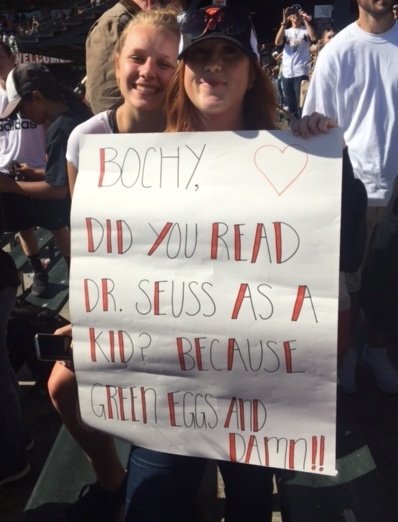 Over that last two weeks we have said our goodbyes to our lovely eighth grade book buddies and moved on to tackle or graphic novels. The book I chose was El Deafo by CeCe Bell. El Deafo is a wonderful story about Cece, a young girl who loses her hearing due to meningitis as a child. In the book, Cece faces many challenges in the “hearing world.” Cece feels disconnected because she can’t read lips, she feels frustrated with others for treating her like she’s mentally incapable, she has difficulty finding true friends and she experiences her first crush. I loved this graphic novel: it was extremely realistic and altogether a super easy read with a lot of real life situations to think about.
Over that last two weeks we have said our goodbyes to our lovely eighth grade book buddies and moved on to tackle or graphic novels. The book I chose was El Deafo by CeCe Bell. El Deafo is a wonderful story about Cece, a young girl who loses her hearing due to meningitis as a child. In the book, Cece faces many challenges in the “hearing world.” Cece feels disconnected because she can’t read lips, she feels frustrated with others for treating her like she’s mentally incapable, she has difficulty finding true friends and she experiences her first crush. I loved this graphic novel: it was extremely realistic and altogether a super easy read with a lot of real life situations to think about.
I almost fell off my chair laughing at Alison’s make cycle for Roller Girl (see above). Roller Girl is about a girl named Astrid trying to survive junior high; from what I can tell this book is themed around friendships. Alison discusses how it reminded her of friendships that had faded away throughout life. Alison’s creation was genius. The story she created is purely visual, no words included but you can easily follow. From the beginning, there are two friends and sweet little pup in the back. Then comes the handsome boy and the friends separate: one of the friends away with her boyfriend and the other stuck with the loyal dog. The couple moves on with life and brings a new baby into the world and the old friend is still single with her loyal dog. I’m sure on some level we can all relate to this. I for sure thought I would be collecting cats and wearing muu muu’s growing distant from my friends, but my story didn’t turn out that way. However, that was a fabulous make that really captures what growing apart looks like.
Morgan Carrico made another make cycle that really caught my eye! Morgan read Smile by Raina Telgemeire: this graphic novel seemed to be a huge hit for the class. Morgan’s make cycle stood out because she shared something personal about how she could relate to the book. I enjoyed hearing about “fitting in” and how we should really just stop and encourage each other to be our authentic selves. We shouldn’t listen and let other opinions of ourselves dictate our lives. I’m seriously excited to read this book. As a young girl, I had seriously crooked teeth, like literally I ate concrete during a game of dodgeball in the hood with boys one day. A little FYI: never laugh with your mouth open and fall face first, the ground will win every time. I spent a year with a retainer that had a key to tighten it, and another year and a half with braces. My face didn’t smile during those years, and when it did kids would call me “snaggle tooth.” Totally cool now because my smile’s pretty sweet, and all those kids went through awkward phases so I guess we’re even. Morgan thanks for sharing!
This week we discussed Chapter five of Reading in the Wild. Miller discusses book preference. A student’s book preference is so important! As a teacher, it’s valuable to understand your student’s book preferences to not only recommend more books to them but to get to know them. Having a book preference will help motivate your students to read. I know Miller talked a bit about how she wasn’t much into some genres her students were but it wasn’t about her so she would never try to steer them away from what they preferred. It was her job and ours as teachers to make those genres available to her students to encourage them to read. Miller also discusses re-reading books and I felt this was very interesting. I had never reread a book until I was forced to re-read Lord of the Rings with a high school class I volunteered in. Miller talked about how rereading a book can help you comprehend the book and notice things you’ve never noticed before. Altogether I feel that Miller showed us the importance of taking interest in your students: when you understand how they work and why they work you can help them have a happy successful education, and cultivate a love of reading for your students.
Author Bio: Sydney is a senior here at Chico State, majoring in Liberal Studies planning to attend Chico State’s credentialing program fall 2018. She works with K-2nd grade for a local STEM based school. During her free time, she enjoys antiquing, kayaking, and spending time with her “fur” children.
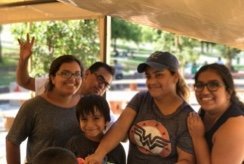 We have finally completed our time with our book buddies and honestly it was so much fun! My book that I read was Mexican White Boy. My buddy had very good things to say when we had our back and forth conversations and I learned a lot by our short time we had. Even though they were just 8th graders, they would respond like I was talking to a high schooler. I didn’t know if they would put a lot of thought to their writing, but it was really good. I learned that I may have a group of students who will be able to be more advanced in vocabulary than their average grade level and I need to be able to work with that and make sure to challenge them by encouraging their advancement.
We have finally completed our time with our book buddies and honestly it was so much fun! My book that I read was Mexican White Boy. My buddy had very good things to say when we had our back and forth conversations and I learned a lot by our short time we had. Even though they were just 8th graders, they would respond like I was talking to a high schooler. I didn’t know if they would put a lot of thought to their writing, but it was really good. I learned that I may have a group of students who will be able to be more advanced in vocabulary than their average grade level and I need to be able to work with that and make sure to challenge them by encouraging their advancement.
Everyone’s Makes look really cool! This is our Make 5 with our graphic novels. I really enjoyed how students made their own graphic scripts.  I really liked how Alondra Alviar did her own interpretation of tying a yarn to her key because it is something she won’t leave without. Anya apparently did enjoy the ghost being with her, so she tied the bone to her, and the ghost would go everywhere where Anya went.
I really liked how Alondra Alviar did her own interpretation of tying a yarn to her key because it is something she won’t leave without. Anya apparently did enjoy the ghost being with her, so she tied the bone to her, and the ghost would go everywhere where Anya went.
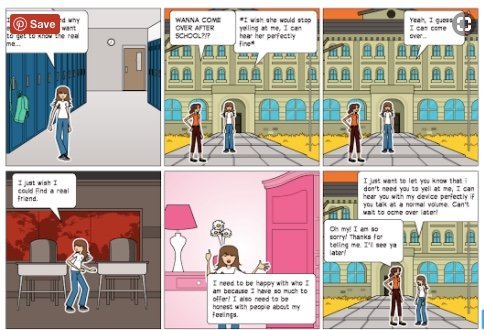 I really liked Jorden Weiher’s make as well. She used the characteristics from her novel to make a comic strip of how the character Cece felt. From the strip I can tell that Cece doesn’t really say her feelings out loud but she realizes that she should say them because then people will keep doing what they are doing even if she does not like it. It will still be hurting her or just bothering her.
I really liked Jorden Weiher’s make as well. She used the characteristics from her novel to make a comic strip of how the character Cece felt. From the strip I can tell that Cece doesn’t really say her feelings out loud but she realizes that she should say them because then people will keep doing what they are doing even if she does not like it. It will still be hurting her or just bothering her.
Author Bio: Isaura is a junior at Chico State and a Liberal Arts major with a minor in Special Education. She loves food and hikes and she is the oldest of three.

